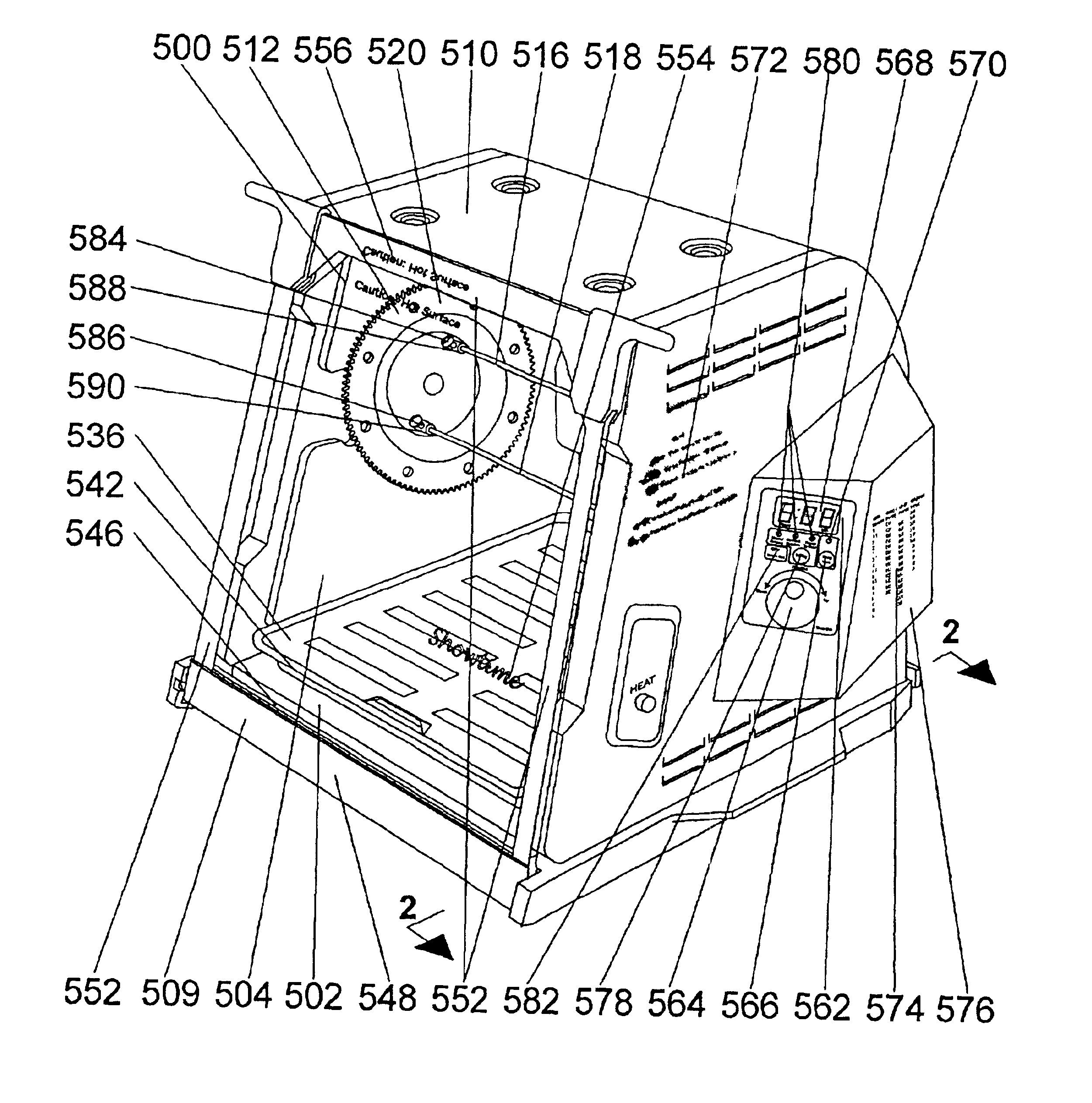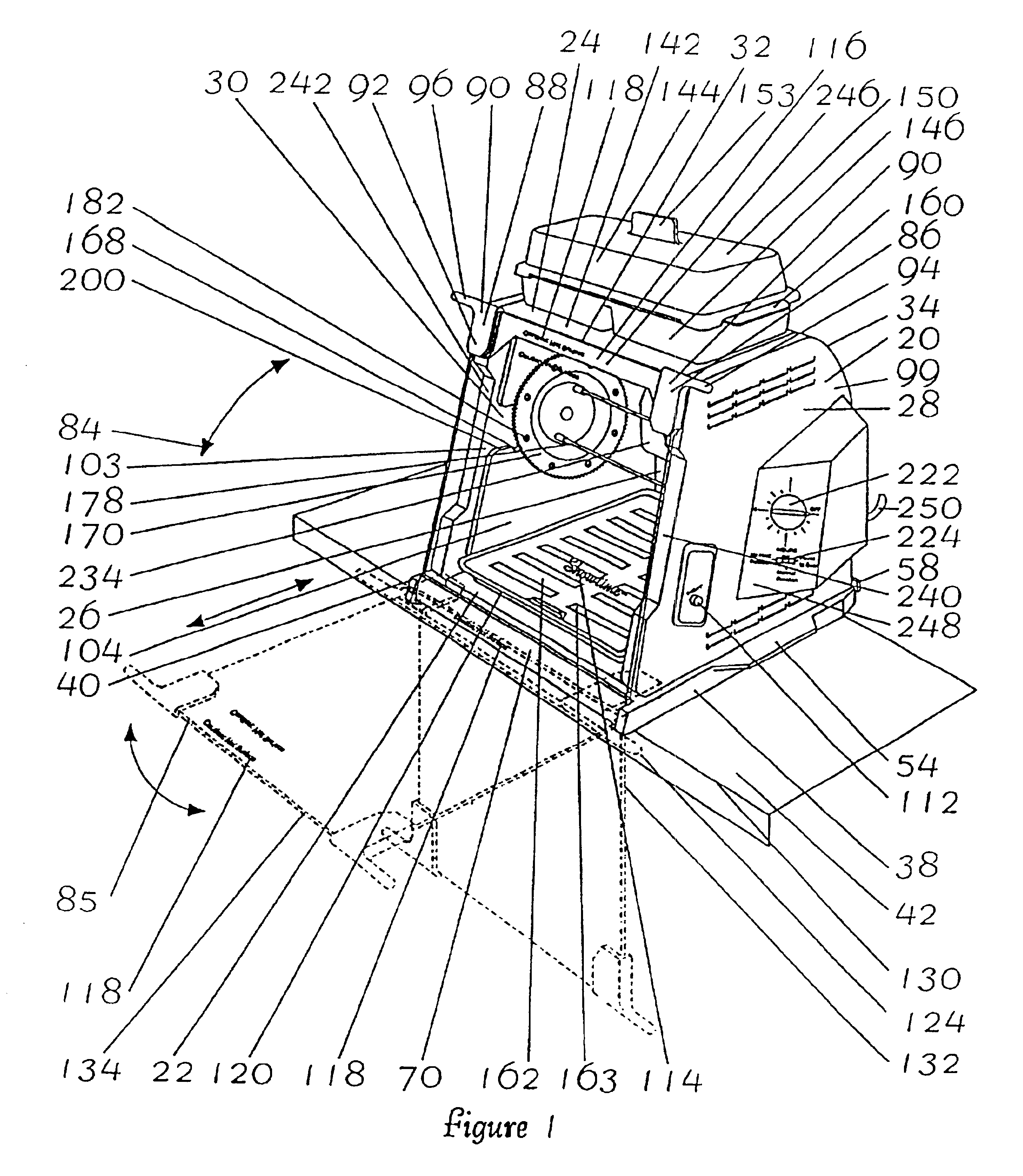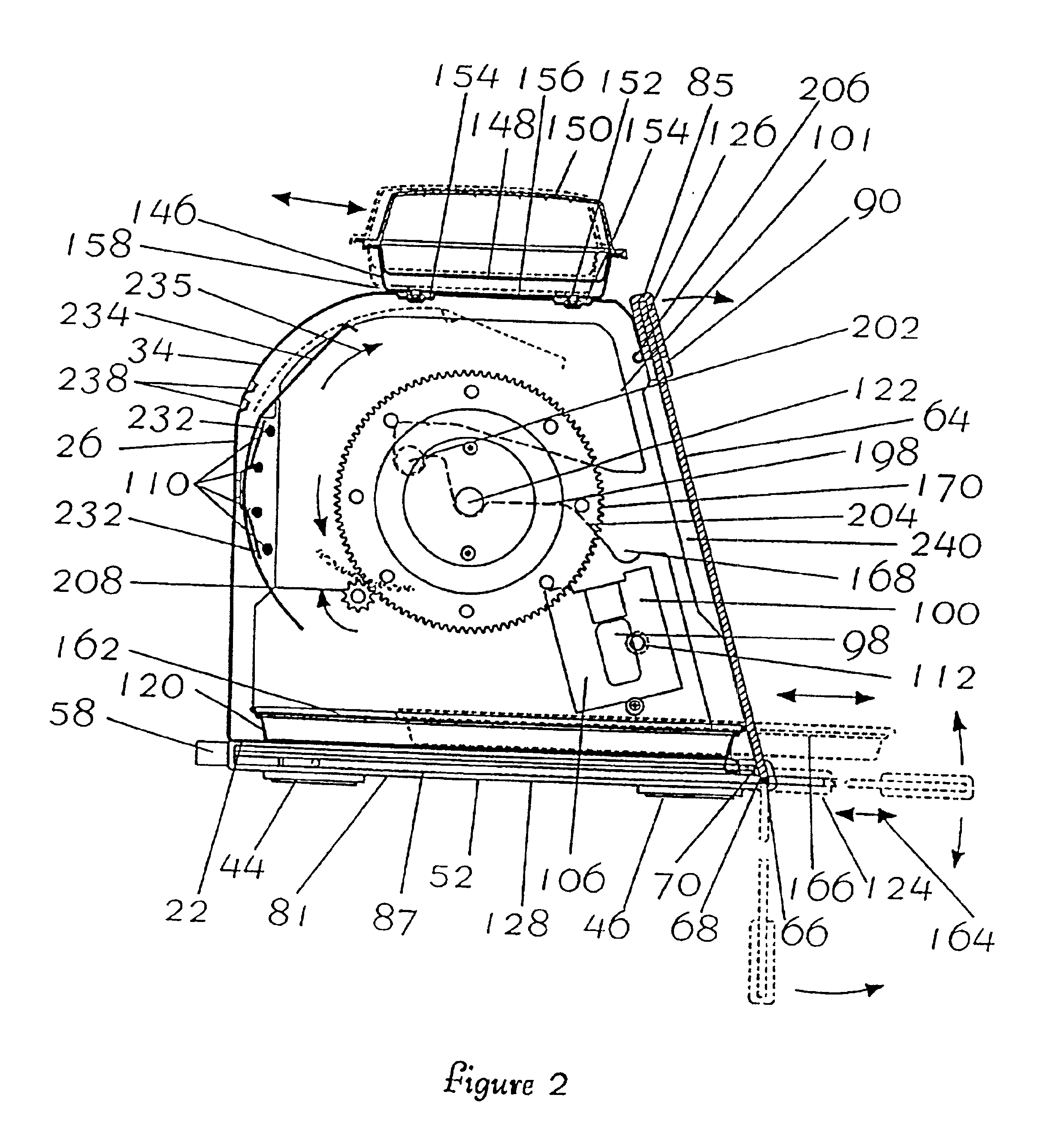Rotisserie cooker
a rotisserie cooker and rotisserie technology, applied in the field of rotisserie cookers, can solve the problems of slow cooking, difficult to check cooking progress, unhealthy grease and oil,
- Summary
- Abstract
- Description
- Claims
- Application Information
AI Technical Summary
Problems solved by technology
Method used
Image
Examples
Embodiment Construction
A preferred embodiment utilizing the present inventions comprises a metal enclosure 20 including an essentially horizontal metal floor 22 and metal roof 24, a generally vertical metal back 26, and two essentially vertical side walls including a double paneled right side wall 28 and a double paneled left side wall 30, and an inclined glass front door 32. A curved metal section 34 containing louver vents 238 joins the generally vertical metal back 26 to the essentially horizontal metal roof 24.
Two horizontal front-to-back running rod-like side rails 38 and 40, one located below the double paneled right side wall 28 and one disposed below the double paneled left side wall 30, support the metal enclosure 20 and raise it off a countertop 42 or flat surface on which it might rest. Four rubber feet 44, 46 and 48 located on the bottom 52 of the side rails 38 and 40 keep the rails 38 and 40 from scratching countertops 42 and help prevent the embodiment from skidding.
The side rails 38 and 40 ...
PUM
 Login to View More
Login to View More Abstract
Description
Claims
Application Information
 Login to View More
Login to View More - R&D
- Intellectual Property
- Life Sciences
- Materials
- Tech Scout
- Unparalleled Data Quality
- Higher Quality Content
- 60% Fewer Hallucinations
Browse by: Latest US Patents, China's latest patents, Technical Efficacy Thesaurus, Application Domain, Technology Topic, Popular Technical Reports.
© 2025 PatSnap. All rights reserved.Legal|Privacy policy|Modern Slavery Act Transparency Statement|Sitemap|About US| Contact US: help@patsnap.com



